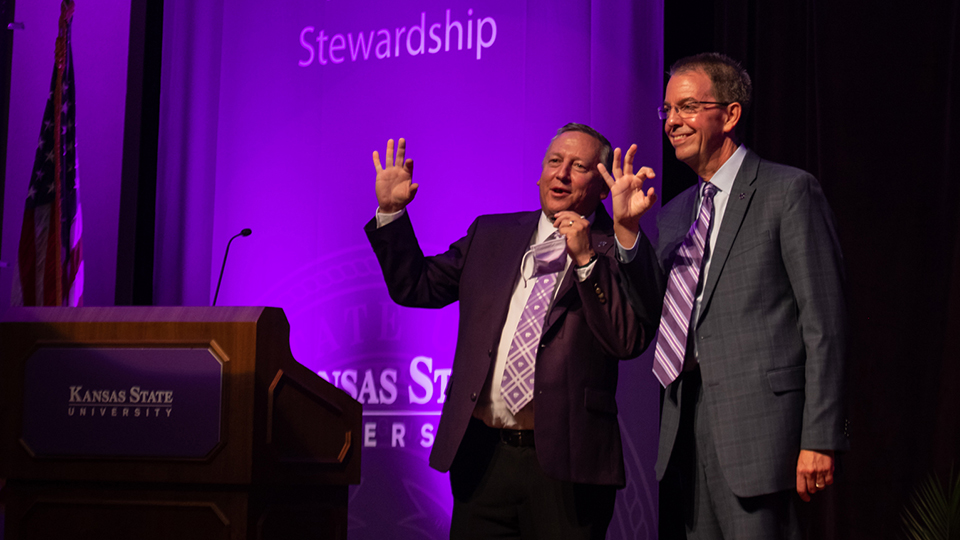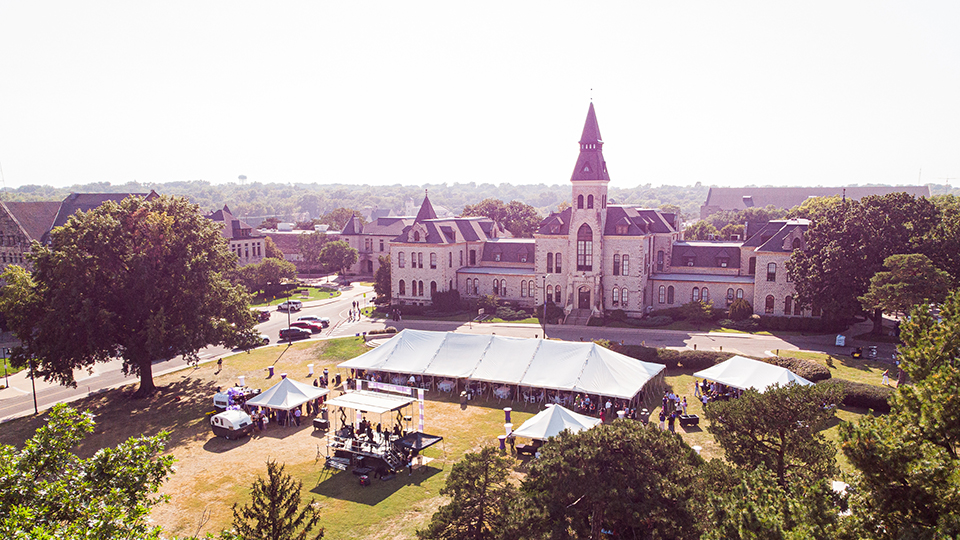Three things you need to know about the Next-Gen K-State strategic plan
Built from input from more than 10,000 students, faculty, staff, alumni, donors and
other university stakeholders, the Next-Gen K-State strategic plan is finally here.
The new plan, which launched Sept. 8, will shape how the university continues to grow
into the future, serving new kinds of learners, solving global challenges, and contributing
to the economic prosperity of the state.
"Being a next-generation land-grant university requires us to renew our commitment to the land-grant mission, which is all about access and opportunity," said Richard Linton, K-State president. "But access and opportunity today means something different than it did in 1863 — we must evolve to meet the needs of today's learners who are seeking different kinds of training and education, and we must embrace our responsibility to serve the state, nation and world through research and engagement in new and exciting ways."
Here are three key takeaways from the new strategic plan:
1. Redefining student populations
According to President Linton, "Critical to the Next-Gen plan is this idea of strongly
connecting our program offerings with industry and workforce needs. Not all who are
seeking education today are looking for a traditional degree — we need to be ready
with a full suite of program options that meet students where they are."
By expanding the makeup of K-State's student body to include more certificate-seeking
students, microcredential-seeking students and more, the university has outlined a
pathway to grow to 30,000 learners by 2030.
"That doesn't mean 30,000 students on the Manhattan campus or across our physical
campuses, nor is it 30,000 degree-seeking students — it's 30,000 citizens of the world
accessing the opportunity to learn how they want, when they want, for whatever reason
they need," Linton added.
2. Growing research and setting the K-State Opportunity Agenda
When it comes to the research arm of the university, the strategic plan outlines a
goal of increased annual research expenditures, growing the university's research
enterprise by this measure to $300 million by 2030.
The university has also identified four interdisciplinary areas of focus where K-State
believes it is uniquely positioned to serve: community health and well-being, sustainability,
global food security and biosecurity, and enabling technologies. These four areas
make up what the university is calling the K-State Opportunity Agenda.
"We are bringing our resources and expertise together across these four areas that
are broad enough for everyone to find their place within them but specialized enough
that this institution will be able to bring its expertise to bear on a grand scale,"
Linton said.
3. Serving the needs of Kansans
According to a Topeka Capital-Journal article about Next-Gen K-State, with reporting by K-State grad Rafael Garcia ’19, the university has heard from
Kansans that their primary needs are in three areas: community health, child care
and housing. Access to water also is a challenge, especially in western Kansas.
"Outreach is core to the land-grant mission, and K-State's Extension network gives
us an incredible infrastructure that allows us to share expertise, create connections
and deliver solutions across the state," Linton said. "By leveraging this infrastructure
in new ways — and with new partners — we are committed to being part of an effort
to build additional capacities and strengths in all 105 counties of Kansas.”


